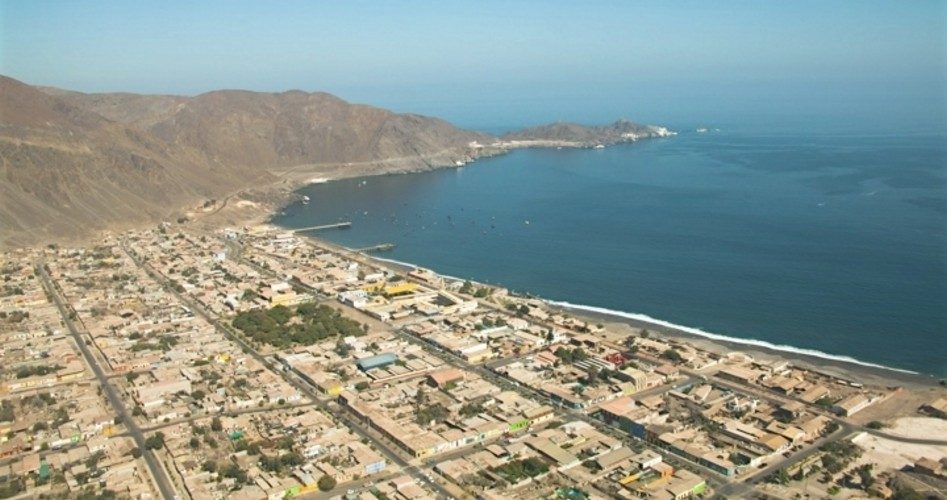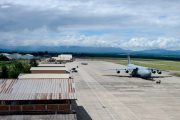
After coming under heavy criticism for pursuing so-called “integration” with totalitarian-minded rulers in Latin America, the governments of Chile, Peru, Mexico, and Colombia — among the best performing economies and the few remaining countries in the region not yet under complete statist domination — announced the formation of a new regional body known as the Pacific Alliance.
However, the new initiative, formally brought into being last week with the signing of an agreement by the four presidents, will not displace the growing patchwork of anti-national sovereignty schemes being erected throughout the hemisphere. Also problematic, according to critics, is the alliance’s apparent effort to court the communist dictatorship ruling mainland China under the guise of expanding trade with Asia.
The ostensible goals of the latest multilateral integration arrangement in the Americas are to expand “free trade” while promoting economic development in the four nations — among the most prosperous in the region. Other governments are welcome to join, too, and the relatively liberty-minded President of Costa Rica, Laura Chinchilla, has already requested membership.
According to press reports, the first official act to be undertaken by the Pacific Alliance is a plan to drop visa requirements for travelers and businessmen among member nations. Also on the agenda going forward: reducing or eliminating trade barriers, a supranational arbitration mechanism, and promoting increased commerce with other Asia-Pacific economies. Eventually, alliance leaders would like to enable the complete free movement of goods, capital, and citizens between member nations.
“We are moving forward towards a process of deep integration never before been seen on the continent,” announced summit host and Chilean President Sebastian Piñera, noting that the alliance would go “far beyond” free trade. “The summit has been a tremendous success and will strengthen us in our task and mission to achieve growth, create opportunities, and beat poverty for our people. This is the objective of every government — to improve the quality of life for our compatriots.”
Other presidents who participated in the birth of the alliance — first proposed publicly in April of last year — seemed even more enthusiastic about the scheme than Piñera. Colombian President Juan Manuel Santos, for example, claimed the new initiative was the “most significant integration process in Latin America.”
Considering the dizzying array of multilateral regimes sprouting up in the region — UNASUR, ALBA, MercoSur, Caricom, CELAC, the Andean Community, and many others — Santos’ assertion is significant, according to analysts. However, he also noted that the Pacific Alliance was not intended to diminish the role of the other integration initiatives marching onward throughout Latin America.
“There are no incompatibilities or exclusion vis-a-vis other integration efforts,” Colombia’s Santos explained. “We are against nobody but rather in favor of even greater integration.”
Peruvian President Ollanta Humala, a statist who assumed power last year but has since moderated his anti-market extremism, echoed those sentiments. “This new space is not geared to oppose any of the other Latin American integration projects, but rather to complement,” he was quoted as saying.
The four member nations include the fastest-growing economies in the region. They are also among the largest exporters, accounting for more than half of Latin America’s international exports. And with more than 200 million people and a combined Gross Domestic Product of around $2 trillion — about 35 percent of Latin America’s total GDP — the creation of the new bloc is viewed as an important development in world affairs.
“The Pacific Alliance’s economic potential is significant,” explained Mexican President Felipe Calderón. He also cited the expected increase in cooperation and trade with Asia as among the reasons that the new effort could eventually become one of the key drivers of global development.
Outside analysts largely agreed. “This looks like something more serious than other Latin American integration efforts,” Antoni Estevadeordal, chief of trade and integration with the Inter-American Development Bank, was quoted as saying in the Miami Herald. “If there’s continued political will to push this forward, we may see something new and very promising in the region.”
To join the Pacific Alliance, governments must have a track record of respecting the rule of law, elections, and constitutional order. If interpreted strictly, more than a few regimes in the region would almost certainly be barred from membership. However, it remains unclear whether the stipulations will be enforced, and if so, how seriously.
Costa Rica and Panama — two relatively free, stable, and prosperous countries — are currently listed as official “observers” in the budding alliance. But both governments are working toward full membership. Representatives from the two nations, as well as King Juan Carlos of Spain and Canadian Foreign Minister John Blair, were in attendance at the signing summit in Chile.
While largely sidestepped by presidents, the initiative is widely seen by analysts as an effort by political leaders in Pacific Alliance member states to distance themselves from the more anti-market forces dominating much of the region. Chile, for instance, consistently ranks as among the freest economies in the world — even higher than the United States.
Colombia and Mexico, while not nearly as free as Chile, are much freer than most of the region. And Peru, despite electing a big-government-supporting president last year, remains relatively free by comparison.
Countries such as Venezuela, Brazil, Bolivia, Ecuador, Nicaragua, and Argentina, meanwhile, are toward the bottom in terms of economic liberty. And it is getting worse. Of course, their populations are paying the price — poverty, insecurity, massive government, crime, capital flight, and more. But they are hardly alone in the region.
Today, most of Latin America is suffering under the rule of totalitarian-minded rulers affiliated with the shadowy São Paulo Forum (FSP). The organization, composed of socialist and communist political parties as well as narco-traffickers and armed Marxist revolutionaries, was created by Cuba’s Fidel Castro, the Sandinistas, and former Brazilian President Luiz Inacio “Lula” da Silva. The Russian and Chinese governments are both heavily involved as well.
Most of the regional integration schemes are in fact dominated by the statist forces. Consider the Union of South American Nations, modeled on the European Union, which selected two socialists as its first leaders last year. The Hugo Chavez-dominated Bolivarian Alliance for the Peoples of Our Americas is even more openly statist.
At least partly due to the strong socialist pressure emanating from FSP-linked Latin American governments, liberty-minded critics have long opposed any further “integration” in the region. Concerns over the potential loss of national sovereignty have been expressed too — especially because so-called “free trade” agreements in today’s world so often mean giving up freedoms and self-determination in exchange for what critics call “managed trade.”
The U.S. still remains Latin America’s main trading partner, followed by Europe. However, China is rapidly expanding its footprint, gobbling up natural resources along with increasing political clout in the region. At the same time, the U.S. government is quickly losing influence among Latin American leaders. And without significant changes in policy, that trend is expected to continue accelerating.
Whether the Pacific Alliance will help countries such as Chile retain their market-oriented economies in the face of “pink tide” pressure remains to be seen. But why governments feel the need to surrender independence under the guise of trade — true free trade does not require any compromise on sovereignty — is still not entirely clear.
Related articles:
Resurgent Communism in Latin America
South American Union Selects Socialist Leaders
New Americas Group Includes Cuba, Not U.S; China Cheers
South American Union Seeks Regional Law Enforcement
Americas Summit: U.S. Government Losing Regional Influence
With UN Support, Socialist Chavez Disarms Civilians in Venezuela
Photo: Aerial Panoramic of Chile Coast via Shutterstock



